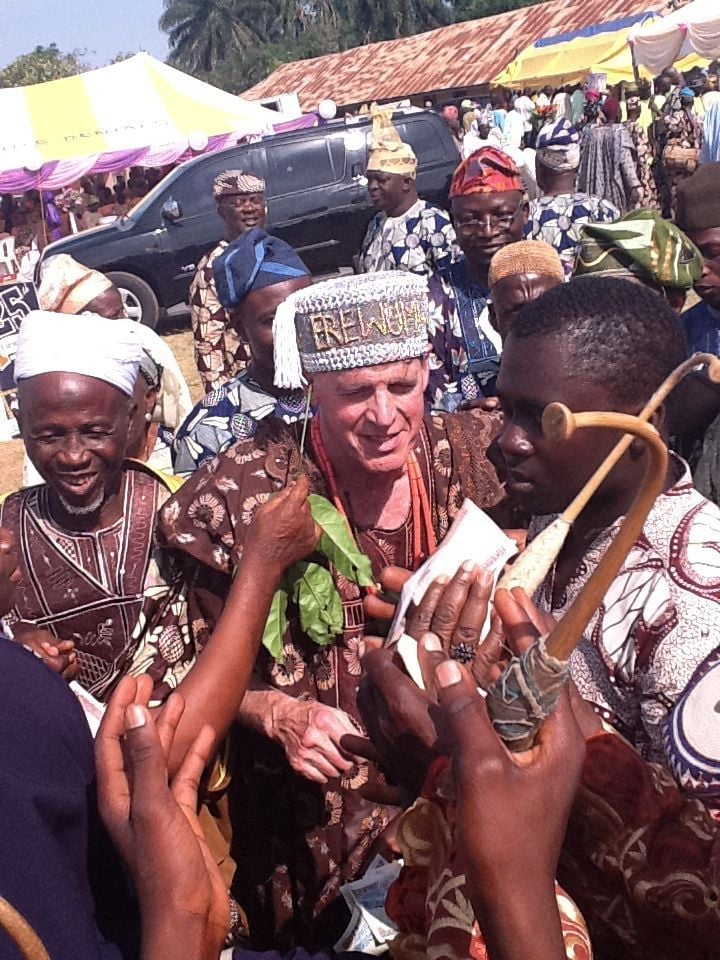Dr. Phillips Stevens, Jr., Associate Professor in UB’s Anthropology Department, has accepted an invitation from the traditional ruler of the town of Èsìe (pronounced ess ee EH) in Nigeria to come to Esie to receive an honorary chieftaincy title, in recognition of his work there in the 1960s and 1970s.
Stevens was a Peace Corps teacher in Nigeria 1963-64. During his school’s vacation time he worked for the Federal Ministry of Education’s Department of Antiquities, who were in charge of the nation’s museums and of curtailing the plunder of Nigeria’s traditional art and artifacts. In 1965 he switched from teaching to work full-time for the Antiquities Department (now the National Commission for Museums and Monuments), and he was sent to Esie.
In the 1930s the British colonial government became aware of a large collection of carved soapstone figures in a sacred grove just outside the village of Esie, in the north-central area of the ancient and famous kingdom of Yoruba. The images are of fragile soapstone and many were damaged (some apparently willfully); their total number is about 1000. In 1945 a shelter was constructed to house and protect the images. By 1965 that building was collapsing and the fragile images were endangered. Stevens was assigned to photograph and catalog the images and to repair as many as possible, and then to supervise the construction of a new museum complex. He extended his tour with the Peace Corps and worked at Esie from early 1965 to mid-1966.
In 1974 at the invitation of the Department of Antiquities he returned to Esie to take some better pictures and to conduct some cultural and geological investigations into the mystery of the origins of the images. In 1978 his book, The Stone Images of Esie, Nigeria (400 pp.; University of Ibadan Press/Federal Department of Antiquities; NY: Holmes & Meier/Africana) was published, in conjunction with the Second World African Festival of Arts and Culture, held the previous year. The book is at once a catalog of the collection, an exposition of the history and meaning of the images, and a report of Stevens’ research into their possible origins.
In 1994 Stevens returned for a visit and met the new chief, Alhaji Yakubu Babalola, the Elesie (Master) of Esie, who had been installed in 1987. From November 29 through December 2 this year the Elesie will celebrate his 25th year on the throne, and as part of the festivities on December 1 he will confer upon Dr. Stevens an honorary chieftaincy title, Erewumi of Esie. “Erewumi” means roughly “I get along well with the images (ere)”, and was the nickname the townspeople gave Stevens during his residency and work there in the 1960s.
Stevens departs for Esie November 24, and returns December 3, and will provide photos and/or videos of the event.
Phil Stevens Class of 1959
